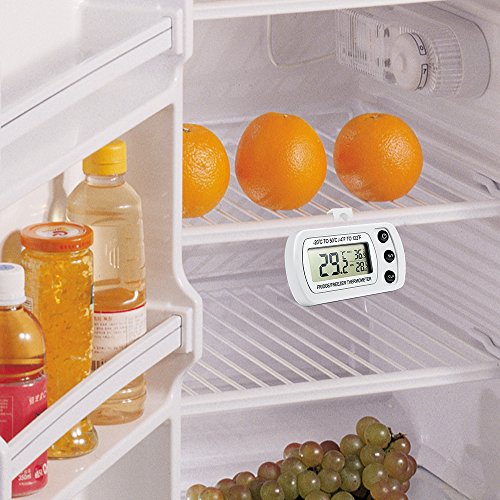What’s the Perfect Temperature For Your Fridge?
 It may seem like water under the bridge (erm, air in the fridge?) but the temperature of your refrigerator can be a—pardon the pun—temperamental issue if even off by a few degrees.
It may seem like water under the bridge (erm, air in the fridge?) but the temperature of your refrigerator can be a—pardon the pun—temperamental issue if even off by a few degrees.
Sure, your fridge is supposed to keep your food cold, but if it’s too cold, fruit and vegetables could potentially freeze and begin to rot. And if it’s too warm? Consider yourself spoiled!
So how can you tell what temperature to keep your fridge set for optimal cooling and storage? We have your answer, below…
What’s the Right Temperature?
The goal of your fridge is simply to slow the growth of bacteria on food without freezing it, so the ideal temperature range for any fridge is roughly 35 to 38 degrees Fahrenheit.
Bacteria growth begins to escalate near the 40 degree mark and items tend to freeze at 32, so 35 to 38 is the sweet spot.
How Can I Tell What Temperature It’s At?
More modern refrigerators may have digital displays, but if your unit is older, it may have a built-in thermometer with a temperature dial. If you still have your manual, you can see what the numbers mean. But if you don’t, you may want to pick up a refrigerator thermometer so you can receive an accurate temperature reading. A thermometer can also reveal which parts of the inside of the fridge are coldest and warmest generally, so you can store foods appropriately.
How Do You Keep the Right Temperature?
First of all, try to minimize the number of times you open the door (specifically, when you’re cooking be sure to take out everything you’ll need for the recipe all at once). Also, have an appliance repairman check your door seal for any tears or gaps, and replace as needed. It’s also smart to keep your fridge stocked, which will encourage a steady temperature flow inside.
Finally, let your food cool before putting in the fridge. If you have leftovers that are still steamy, let them reach a room temperature before storing or else you may risk heating the fridge up and displacing the cold air.
(via The Kitchn)






